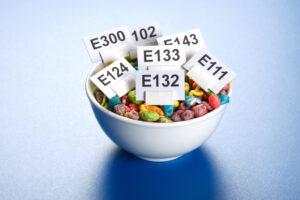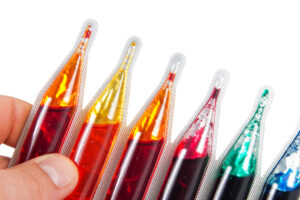Why do we have food coloring?
What is it about America that differs from other countries in the way we dye our food?
Many health-conscious people are already aware of the dangers of certain food dyes like red No. 40. That’s always the one where, if you look at a label and it says Red 40, you know to put that item back.
If you didn’t know that, well now you do, and here’s why. Red 40 actually comes from petroleum distillates or coal tars, sounds tasty right? Along with Yellow 5 and Blue 1, these artificial food colorings are linked to organ damage and even cancer in animals.
In humans, two large studies found that children had increased hyperactive activity after ingesting Red 40 and Yellow 5. In 2007 they evaluated six dyes that seemed to link to behavioral problems in children.
“Red 40 contains p-Cresidine, which the U.S. Department of Health and Human Services says is “reasonably anticipated” to be a human carcinogen.” Source
Things weren’t always this way though, up until mid 19th century, natural food dyes were commonly used. Colors from plants, animals and different minerals were used to color food in the US. This all changed when companies found out artificial dyes were a lot more profitable.
 Similar to how we like pretty vegetables in the grocery store, we like bright, consistent, artificial looking food as well in America.
Similar to how we like pretty vegetables in the grocery store, we like bright, consistent, artificial looking food as well in America.
We like stability, to see the same amount of color in each item. We are born into a world of consistency, so when we see anything otherwise, we usually associate it with tasting bad.
In a 2011 FDA report, they stated that the relationship between artificial dyes and hyperactivity in children was not fully established, yet still concluded that dyes made symptoms worse with children with ADHD and other behavioral problems.
“One study found that Red 40 lowers reproductive success in rats. It also reduced parental and offspring weight, decreased brain weight, and lowered chances for survival in newborn rats.” Source
Sure, more in-depth and comprehensive studies are needed to fully show us the effects on healthy people using these artificial dyes, but we don’t need studies to show us that eating artificially is bad for our health.
We aren’t designed to break down chemically enhanced food.
Do you really need the FDA to tell us whether or not we should be eating artificially? It is no secret or strange conspiracy theory that all food companies including the FDA will put profit before health.
Thanks to Slate for this information!


